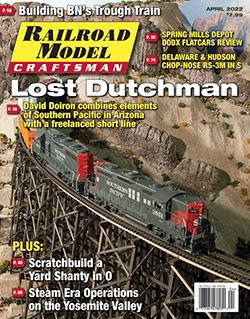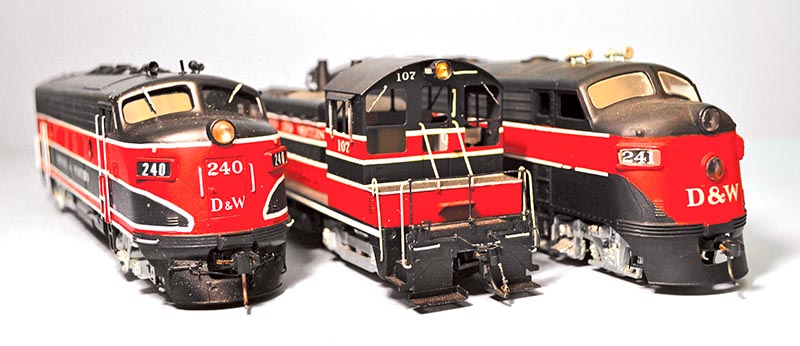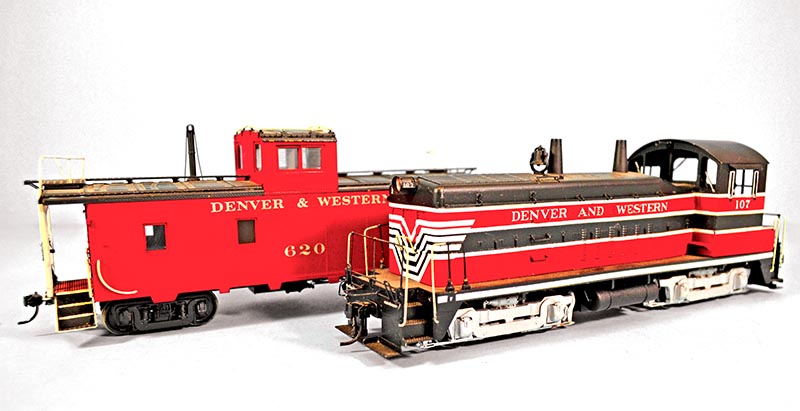 For those of us who model a freelanced railroad, choosing a name and paint scheme for our imagined operation can be just as important as the models, locale, and era we choose. Some choose names to honor a family member or mentor, or even a hometown or favorite vacation spot, while others go the route of tongue-in-cheek humor and clever double-entendres. Looking to combine the best of both worlds, some modelers look to the prototype for inspiration, planting their flag just this side of imagination, but a step closer to the real world.
For those of us who model a freelanced railroad, choosing a name and paint scheme for our imagined operation can be just as important as the models, locale, and era we choose. Some choose names to honor a family member or mentor, or even a hometown or favorite vacation spot, while others go the route of tongue-in-cheek humor and clever double-entendres. Looking to combine the best of both worlds, some modelers look to the prototype for inspiration, planting their flag just this side of imagination, but a step closer to the real world.
Growing up, my family would take a week-long summer vacation to Colorado every year. These trips were always exciting for a young railfan like me. While I was familiar with railroads near my home in central Illinois like the Illinois Central, Wabash, and Gulf, Mobile & Ohio, I didn’t have a chance to experience big Western roads such as the Denver & Rio Grande Western, Burlington, Union Pacific, or Santa Fe—except for these vacations. I’d always see a variety of train action on the way to and around Denver, Colorado Springs, and farther west into the Rockies.
I was modeling in S scale at the time and building a 6×15’ L-shaped layout in my parents’ basement, but I didn’t have a name chosen for my pike. I wanted the layout to represent the Front Range area near Denver and west of there where the mountains made railroading a challenge. I figured the name of my model railroad had to have the “Denver” in it, and then anything west of that was in the running because I loved the entire West, and the trains that ran through it. Thus the name “Denver & Western” was born. In the early years, the name mostly appeared on printed railroad passes that I made and traded with friends. Not many others were using that name for their model empires, and that exclusivity made the name selection even more rewarding for me.
Later in life when I was building my third layout, I got serious about using the D&W brand by lettering locomotives and cars with it. I felt that this was a way to showcase the D&W name and preserve memories of those Western adventures from my youth. Prior to that, friend Bob Nicholson, a Santa Fe engineer, had discussed with me how he intended to number his S scale units for his own freelance railroad, and which units he’d need for his layout. That got me thinking that it would be fun to have a special railroad color scheme, and select motive power on perceived needs, just like the prototype. I was the Motive Power Superintendent of the Denver & Western Railway and needed justification for the type of power the railroad purchased. I also had to pick those locomotives from what was commercially available in S scale at the time.

—Don Heimburger photo
I already knew what paint scheme I wanted the D&W to wear: Rock Island’s beautiful red, black, and white with the white safety stripes and silver trucks was striking and perfect for my road. One of the facets of the Rock Island diesel paint scheme I liked most was the fact that it seemed to change often; I don’t remember seeing more than a few units painted alike. This meant I had great latitude in selecting the appropriate D&W colors and paint schemes based on which locomotive was wearing it. I figured it would add variety to my roster to have several versions of the paint/lettering scheme and show that the roster changed over the years. There would still be enough of the general paint scheme on any unit so that visitors would immediately recognize that it was part of the Denver & Western family.
My first purchase was an Alco RS-3, a brass import from Alco Models. The company also produced a six-axle RSD4/5, which became the D&W’s second locomotive. The RS-3 and RSD-4 combination looked great on my layout, and was a good start for the D&W roster. Thereafter I continued to expand the D&W motive power fleet. I added a couple of EMD FP-7 and F-7 units to make a mish-mash of motive power lash-ups that were common sights in the 1960s. Along with an end-cab switcher that later joined the roster, I had appropriate locomotives to cover every type of train the D&W might run, whether a long manifest or a short local freight.
For me, creating a unique brand and family look for my motive power was the way to go, because it allows my railroad to be unique and it gives me a chance to remember those formative trips out West when I was a kid. Treat your railroad’s name and color scheme as a prototype brand, and you’ll suddenly see your concept come to life right before your eyes. Think like the real railroads do, and add a new dimension to your freelance model railroading activities.
—Don Heimburger



